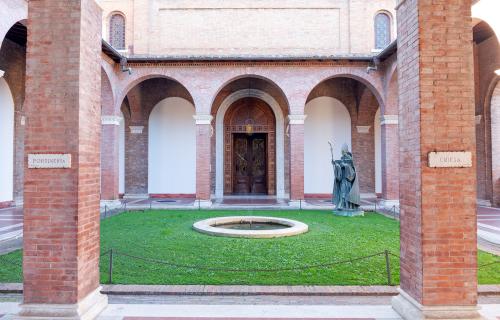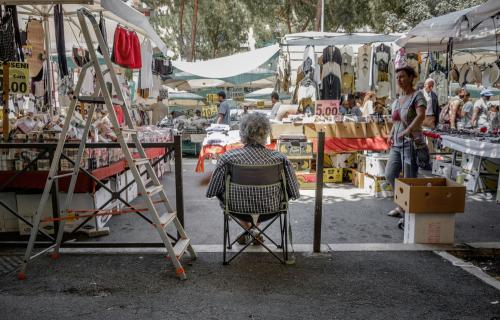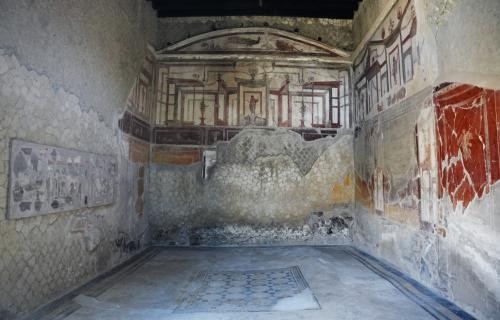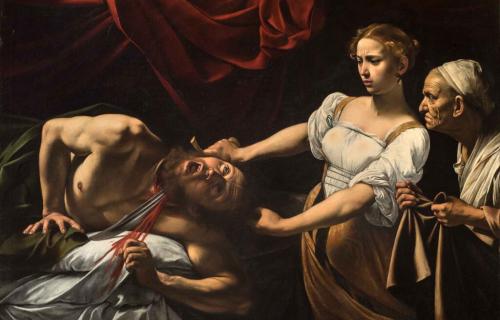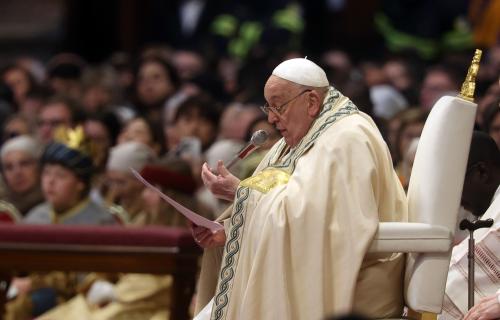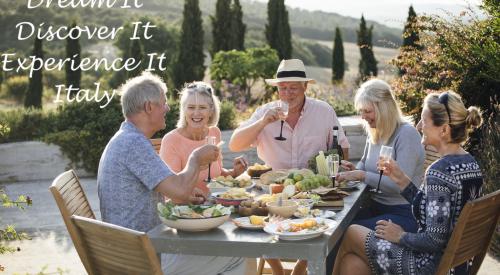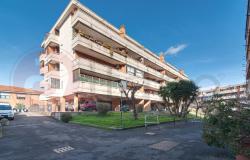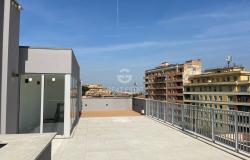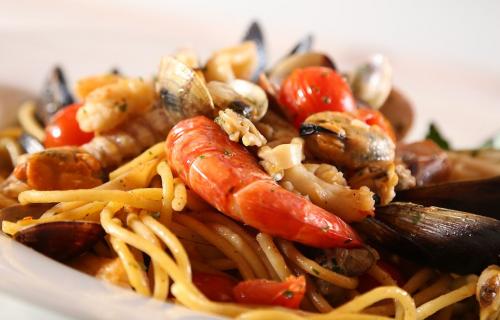Looking for suggestions on the best (and easiest) way to get from Termini to Civitavecchia. My sister has some mobility problems and each of us will have a large (checked size) suitcase.
Rome (Lazio)
Our Essential Guides aim to give you an introductory overview to a region, city or geographical area. For a deeper dive into Rome and the surrounding area in Lazio, check out the Lazio issue of Bellissimo, our quarterly e-magazine for Premium Members. And if you’re planning to be in Rome during the Jubilee Year 2025, you won’t want to miss our special Vatican City issue — it’s free with a short survey.
The Essential Guide to Rome
Whether you’re a first-time or repeat visitor, Rome — the Eternal City — never ceases to inspire and captivate. Its historic center, with its arts and cultural riches, from the ancient Romans through the Renaissance and Baroque eras, is a UNESCO World Heritage Site since 1980.
Visit such iconic sites as the Colosseum, Roman Forum, Trevi Fountain and the Pantheon — but don’t stop there. Venture beyond to access the roots of the romanità: visit the Capitoline Museums, the oldest public museums in the world, which preserve the memory of Ancient Rome; see the Ara Pacis and Domus Area, archaeological sites that have been restored and enhanced thanks to multimedia technologies; enjoy a quiet walk in the city's beautiful parks, such as Villa Borghese, Villa Doria Pamphilj and the Appia Antica, and discover Rome’s more contemporary side at the Zaha Hadid-designed MAXXI and at Macro, the Museum of Contemporary Art.
Best times to visit Rome
Rome is one of the most popular tourist destinations in Italy and Europe. If you wish to avoid huge crowds, travel between late October and early April, when room rates are also lower. High season is typically from Easter to September, plus Christmas and New Year. This is when you’ll find the city at its most crowded and higher hotel rates. In terms of weather, Rome, thanks to its Mediterranean climate, can be visited year round. Spring and fall are the most pleasant seasons to visit. July and August can be hot, while January and February are the coldest months, although at a still acceptable 10-12°C during the day. Temperatures rarely go below 0°C.
Traveling to Rome: how to get there
For many international visitors, Rome is often the first (or last) stop on an Italy itinerary. This means you’ll arrive at or depart from Fiumicino Airport.
Rome has two international airports: Leonardo da Vinci/Fiumicino International Airport (FCO), which is Rome's main airport and the one used for intercontinental flights; and Ciampino International Airport, located to the southeast of the capital and served by low-cost airlines such as EasyJet and Ryanair.
Fiumicino is connected to the city center by public transportation. The cheapest option is the bus, with tickets approximately €6 per person for a 50-minute ride in light traffic.
The non-stop Leonardo Express train is slightly more expensive at €14, but you’re guaranteed to reach Termini train station in only 32 minutes, with departures every 15 minutes.
The most expensive but also the easiest option is the taxi, which will take you directly to your hotel. It costs a flat rate of €48 during the day (€53 at night) and takes about 40 minutes to reach Rome if traffic cooperates.
The main train station in Rome is Termini, served by hundreds of trains every day, including Frecciarossa and Italo high-speed trains. The secondary train station is Tiburtina, also served by high-speed and local trains.
We advise against driving in Rome and if you are getting into the centro storico by car, check with your hotel for the need to have a driving permit as the center has many ‘limited traffic zones’, or ZTL.
*Check our ultimate guide to train travel in Italy.
How to get around in Rome
Expect to walk a lot. One of the joys of a visit to Rome is wandering its streets, neighborhoods and piazzas to immerse yourself in the local life. Most of Rome’s attractions are located in the city center and are easy to reach on foot.
If you need to reach farther away places, such as Vatican City or the Basilica of San Giovanni in Laterano (one of the four papal basilicas of Rome), consider taking the metro, which is quicker and more reliable than buses and other above-ground transport.
Two main metro lines serve the center: A (orange) and B (blue), intersecting at Stazione Termini (Rome’s main train station), where both have a stop. Metro trains run between 5:30am and 11:30pm and to 1:30am on Fridays and Saturdays.
Take line A for the Trevi Fountain (Barberini), Spanish Steps (Spagna) and St. Peter’s (Ottaviano-San Pietro). Take line B for the Colosseum (Colosseo). Tickets can be purchased at metro stations, newsstands and tabaccaio stores. If you’re planning to use public transport regularly, consider buying a few tickets at a time or day/week passes.
Driving in Rome is not recommended (nor needed). Most of Rome’s historic center is closed to unauthorized traffic during the day. A car may be useful for a trip out of town, but consider that many places can be reached by public transport. For example, if you wish to visit Villa d’Este in Tivoli, there is a local train and bus service.
Insider tips
- Whenever possible, book your tickets for museums and monuments in advance. Booking online will cost a few extra euros, but it will allow you to enter through a different line from those without a ticket, saving you time. This is especially true for the Vatican Museums, Colosseum and other super popular sites.
- Rome’s state-owned museums, galleries, archaeological sites, parks and gardens are free to enter on the first Sunday of each month. As you may expect, on those Sundays they’re popular with locals, too, so plan to show up early or visit one of the lesser-known sites.
- Many of Rome’s city and state-owned museums, like Galleria Borghese and Palazzo Barberini, are closed on Mondays. The Vatican Museums and Sistine Chapel are closed on Sundays so they tend to be crowded on Saturdays and Mondays; try to visit Tuesday through Friday. They’re free to enter the last Sunday of the month.
What to see in Rome
There is no shortage of things to see and do in Rome. You’ll be strolling the same streets as gladiators, popes and legendary artists did, amid archaeological sites, Baroque fountains, ancient churches, Renaissance palaces, incredible museums, parks and gardens with beautiful views, and even the catacombs.
Rome repeatedly makes lists of the most desirable cities to visit in the world, and it’s no wonder: it’s got something for everyone, whether you’re an archaeology buff, a Renaissance lover, a Baroque enthusiast, a history and art lover or a foodie.
Museums
The Vatican Museums boast some of the world’s most renowned Roman sculptures and most important masterpieces of Renaissance art, amassed by the Catholic Church and the papacy throughout the centuries. They include the Sistine Chapel, with its ceiling and altar walls decorated by Michelangelo, and the Stanze di Raffaello.
The Capitoline Museums constitute the oldest public museum in the world, founded in 1471 by Pope Sixtus IV. They contain many ancient Roman statues, inscriptions, and other artifacts, as well as the iconic Capitoline Wolf.
The Galleria Borghese houses the impressive Borghese collection of paintings, sculpture and antiquities begun by Cardinal Scipione Borghese with works by artists of the caliber of Bernini and Caravaggio.
Archaeological sites
Traces of the ancient Roman civilization are everywhere in the city: from the Colosseum, the largest ancient amphitheater ever built, where gladiators fought beasts and each other for the entertainment of the Romans, to the Roman Forum, which contains the ruins of several buildings that once formed the heart of ancient Rome; from the Domus Aurea, Nero’s imperial palace, to the Baths of Caracalla, the city's second-largest Roman public baths. In Rome, you can travel back to the time of the ancient Roman Empire, and better grasp its long-lasting influence on Western civilization.
Churches
Rome has four papal basilicas, the most famous of which is of course St. Peter’s (in the Vatican, home of the Pope) with its famous La Pietà statue by Michelangelo and 137-meter-high dome. The other three are Santa Maria Maggiore, San Giovanni in Laterano (the Cathedral of Rome) and San Paolo Fuori le Mura.
The city has hundreds of churches. Other notable ones include Santa Maria in Trastevere, one of the oldest in Rome, with impressive mosaics; Santa Maria del Popolo, which contains works by Renaissance artists the likes of Pinturicchio, Raphael, Bernini and Caravaggio, and San Clemente near the Colosseum, which is interesting because you can see the different layers of history, from pagan temple to medieval church.
Parks
Parks probably aren’t the first attraction that comes to mind when planning a trip to Rome, but the city has many beautiful ones, often with photogenic views and incredible backstories — and most of them free! The most famous is Villa Borghese, with leafy lanes and the magnificent Galleria Borghese (visitable by reservation). The Vatican Gardens are splendid, though they’re only accessible by guided tour. The Gianicolo boasts a superb viewpoint over Rome’s rooftops and the Appia Antica Park is best explored on a bike, pedaling along the well-preserved ancient Roman road. You can also visit some catacombs. In spring, stop by the Botanical Gardens and the Roseto Rose Gardens to see the flowers in bloom.
What to eat in Rome
When in Rome, eat as the Romans do. Traditional Roman cuisine is hearty and seasonal, based on rural and peasant traditions.
The most famous pastas to try include the iconic Bucatini all’amatriciana, Pasta alla gricia, Spaghetti alla carbonara, and Spaghetti cacio e pepe. Second courses are not for the queasy stomach; besides Saltimbocca alla romana, a veal dish, we have Coda alla vaccinara, a classic of cucina romana povera, made from oxtail; and Quinto quarto, the offal of butchered animals. Not a dish in itself, it’s used in many recipes of Roman cuisine, for example trippa alla romana, pajata, coratella and testarelle.
On a lighter note, the most famous vegetable of Roman cuisine is the artichoke, with the classic Carciofi alla giudia or Carciofi alla romana. If you want to eat them fresh, then stick to the months from February to May. Puntarelle (chicory sprouts) salad is a typical side dish. A classic street food that is the Romans’ version of granita is called Grattachecca.
Where to stay in Rome
There is no shortage of places to stay in Rome, from the most luxurious five-star hotels to charming B&Bs to cheap hostels. The area around Termini train station, while a bit run-down, works well if you’re on a budget and you want to be close to the center. Trendy Monti is well-positioned, near major attractions such as the Colosseum and is lively at night, with bars and restaurants. Trastevere, on the Tiber's west bank, is one of Rome's most charming neighborhoods with its cobbled alleyways, independent shops, restaurants and bars open late at night. The Spanish Steps area is very elegant, with more expensive accommodation and a perfect location to explore the city center, just as Piazza Navona and the Pantheon, which allow you to be in the midst of it all. Testaccio, while not particularly picturesque, is the place to be for foodies, with its restaurants kicking off new food trends, and for night owls, thanks to its many bars.
Guide last updated by Silvia Donati, 2022
Rome Highlights
What you can't miss in Rome
Where is Rome

Top Experiences in Rome
Best places to stay in Rome
Properties for sale in Rome
Recipes From Lazio
What others are saying about Rome
In Rome, I ate at da Enzo, Ristorante Venerina and da Etta. All excellent!!





